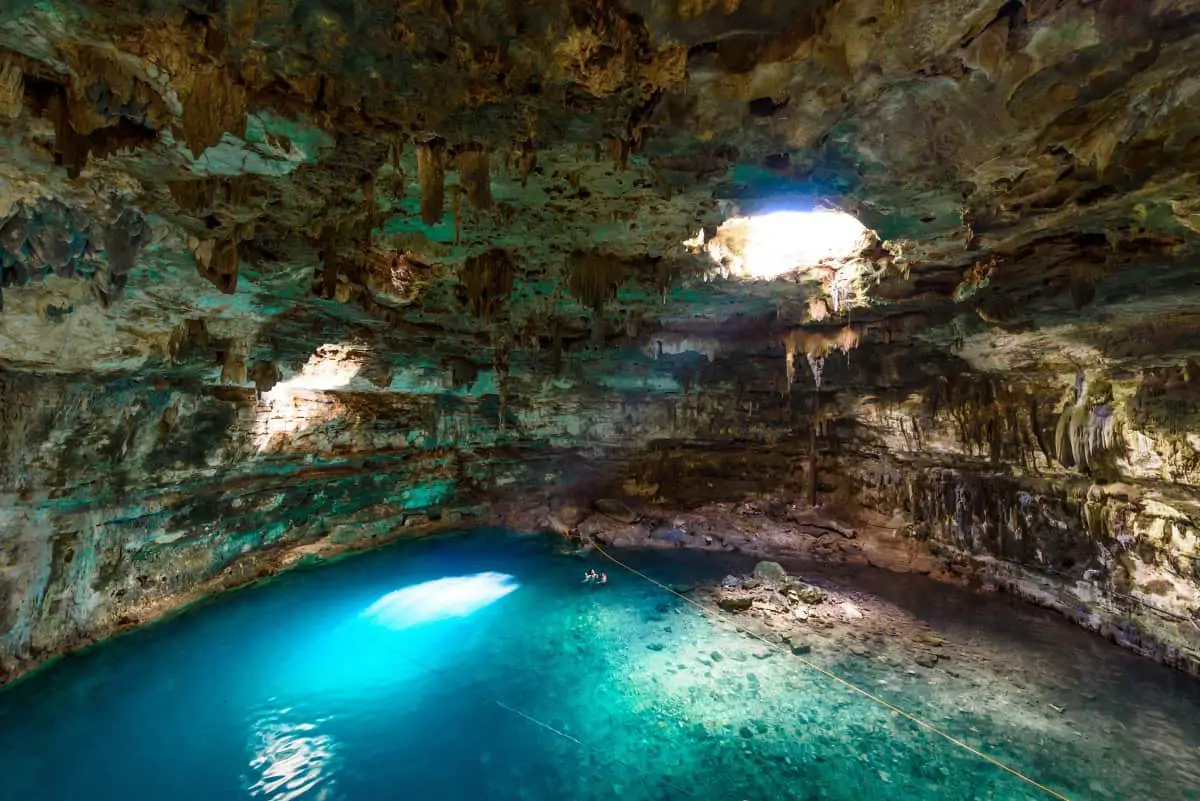If you are thinking about going caving, or spelunking as it is called in the United States, you will want to pack a jacket. Will a light jacket be good enough, or should you get something more substantial? The answer, of course, depends on the temperature of the cave.
How cold are caves? A cave’s temperature is usually similar to the average yearly temperature of the surrounding area. The temperature in a cave is relatively constant. Caves generally are cooler because they are not affected by weather conditions that are above ground.
Caves hold many mysteries, and one of them is how can it be hot outside and cool in a cave. Let’s explore why that is.
If you’re interested in caving, be sure to read my Beginners Guide and recommended gear section.
The Average Temperature of a Cave
Generally speaking, the average temperature of a cave is within a few degrees of the yearly average temperature of the surrounding area. Keep in mind that the average temperature includes not just daytime but also nighttime temperatures. That is why even hot places have a lower average yearly temperature.
Death Valley’s high temperature is 98 degrees, but its annual low is 60. That’s why the average temperature of the hottest place in America is 75 degrees.
Carlsbad Caverns, a famous cave system, is in another hot place – New Mexico – the average temperature is 62.4 degrees (source), while the temperature in the caves themselves is around 56 degrees. Temperatures above ground in Carlsbad can reach 90-100 degrees in the summer, but the temperature in the caves remain the same.
Here are a few additional temperatures from several famous caves.
| Cave | Average Cave Temperature | Surrounding Area Average |
|---|---|---|
| Crystal Cave near Spring Valley, Wisconsin | 50 | 46 |
| Crystal Cave near Kutztown, Pennsylvania | 54 | 50.3 |
| Mark Twain Caves in Hannibal, Missouri | 52 | 53 |
As you can see, cave temperatures usually are no more than 4 to 5 degrees different from the annual average of the surrounding area.
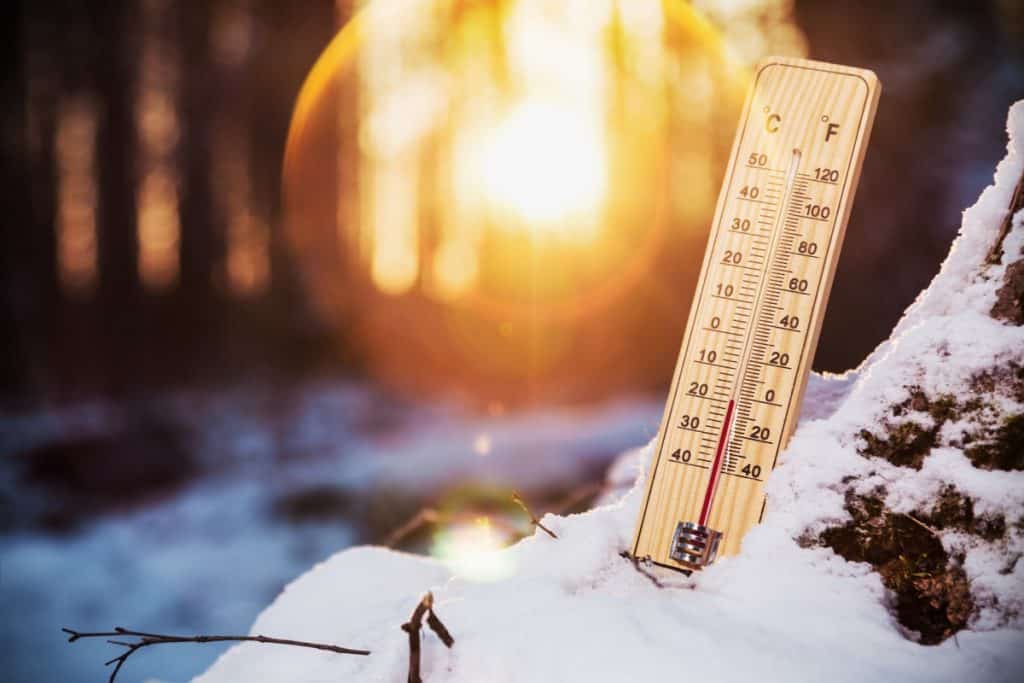
Why Are the Temperatures so Close to the Surrounding Climate?
The temperature outside of a cave is affected by the amount and intensity of sunlight, wind patterns, and rain. Most of those don’t occur inside a cave. Instead, the temperature of the cave is affected by the temperature underground.
Most people know that the interior of the earth consists of molten lava, which is hot enough to melt rocks. Lava temperatures range between 1,300 to 2,200 degrees Fahrenheit, which is 700 to 1,200 Celsius. However, these high temperatures are 90 miles below the surface. Since soil is a poor conductor, it takes a long time for the heat to radiate upward.
Once you dig several feet into the ground, you will notice that the average temperature is steady, typically around 50 degrees. That is why before refrigeration, people stored their food in root cellars. If they had access to a rise in their land, they would dig their cellars into the rise, creating a sort of mini-cave to store vegetables, fruits, and jams.
When you reach the part of the underground where temperatures begin to rise again, they do so by about 1 degree every 70 feet. That means you have to go 700 feet down to see a 10-degree rise in temperature.
Why is the Temperature of Caves so Constant?
The temperature of the caves is constant because the temperature underground is fairly constant. Once you go 12 feet below the surface, there are few variations in temperature. A lack of weather causes a consistent temperature.
For example, the amount and intensity of sunlight is the primary source of heat above ground. The sun’s heat is more intense when it hits the surface directly. That direct light, by the way, is why it is much hotter in the summer, even though the earth is further away from the sun. In the summer, longer days mean higher temperatures.
- Since caves are underground, they don’t receive the heat from the sun.
- Wind and rain also affect temperature. Caves generally see no rainfall. A cave with a larger opening will have more wind, which might lower the temperature. However, this difference will be small.
- Clouds, or lack of them, also affect weather conditions, and again, most caves don’t have clouds.
Thermal Mass
The other reason that temperatures in caves are constant is the thermal mass of rocks. Thermal mass is the heat that an object can hold. Rocks can retain warmth, but first, they have to heat up. The larger the stones, the longer it will take for them to warm up (or cooldown).
So, when it is hot above ground, any heat gathered by rocks first has to be dispersed throughout the large mass of rocks surrounding the cave. By the time this has happened, the surface is beginning to cool again. The stones then start the slow process of releasing the little heat they had gathered.
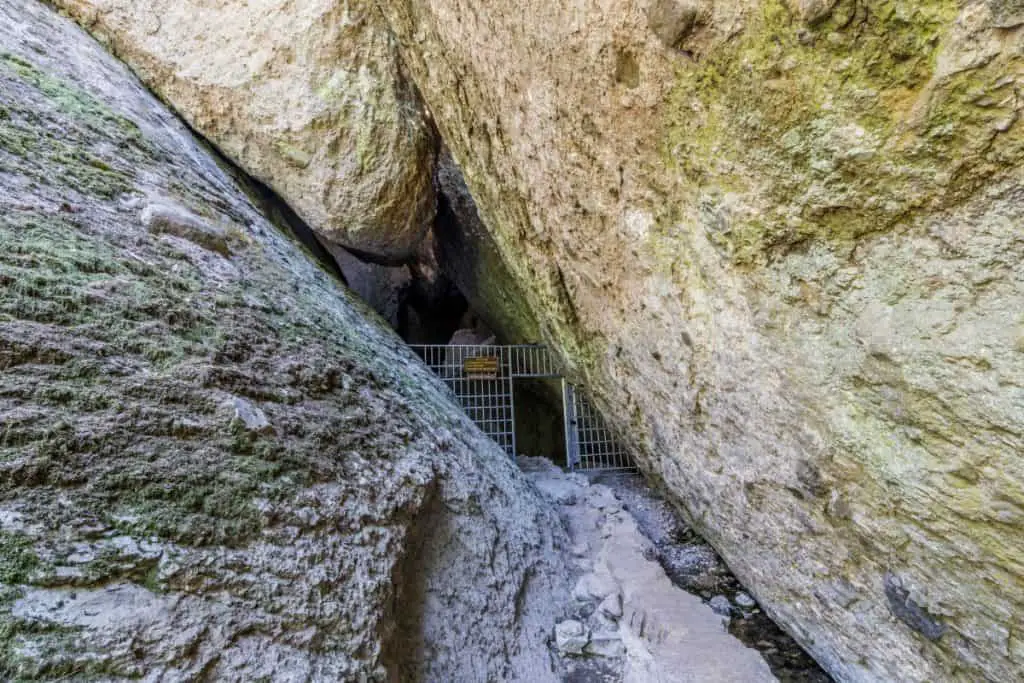
Do Cave Temperatures Ever Change?
Cave temperatures can fluctuate—but not by much. The leading cause of this fluctuation is airflow. We call airflow that we can notice wind or a draft. However, even airflow that is not noticeable can cause changes in temperature. Here are some examples:
- Thermal Convection: The differences between warm air and cold air can create a convection current. When the temperature above the ground is cold, then the warmth from the rocks could be drawn upwards (through vertical shafts in the cave’s roof). As the warm air rises, it sucks colder air in.
- Slope: Caves that slope downward will have cold air sink down, so they are slightly colder. Caves that slope upward tend to be warmer.
- Multiple openings: Caves that have more than one opening often have a “chimney effect.” Warm air will escape from the higher opening and bringing in cooler air during the winter.
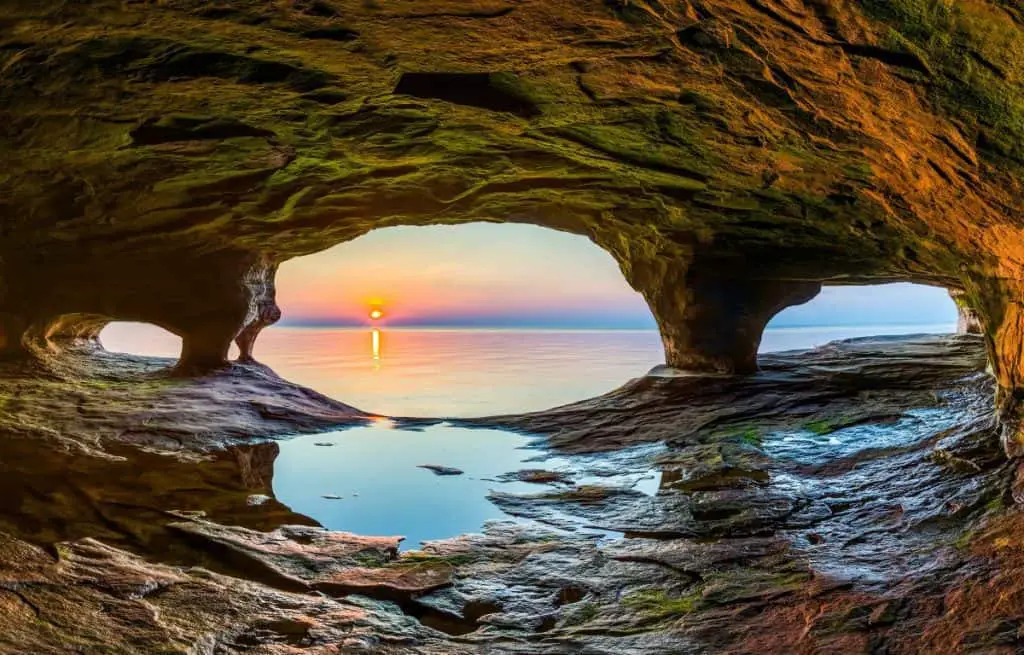
To humans, these differences are negligible. You might wear a heavier jacket in the winter. However, these slight variations in temperature affect bats and their hibernation. Rapid temperature changes will affect whether bats will be able to hibernate as long as they need it. Caves with greater than average temperature changes are habitats marginal for bat survival.
The constant temperatures of caves are one reason why evolutionary biologists find them valuable. The lack of weather reduces the variables involved in their research on how living organisms adapt to their environments. If you want to read more about that fascinating research, follow this link.
Are There Exceptions?
Earlier, we said that caves don’t have clouds. There is one exception. The Er Wang Dong cave system in southwest China is so extensive that it has its own weather system. Part of the system is the Cloud Ladder Hall, an air space about 12 acres large. Due to its size and depth, clouds float near the roof of the cave. There are some cool pictures of this cave here. Or check out this video.
What About Cold Climates?
In frigid climates, the temperature of the earth is still within its normal range. But first, you have to get past the permafrost. In places where the yearly average temperatures remain below freezing, the ground cannot warm enough, so it stays frozen. That frozen ground is called permafrost. Underneath the permafrost, temperatures will begin to rise, also at the same 1 degree every 70 feet rate.
Scientists have discovered a cave system underneath Antarctica, where the average temperature is around 75, which is warm enough for a t-shirt. Scientists are excited to study this system in the hopes of finding new animal or plant species.
What About Ice Caves?
There is a category of caves that are always cold enough that the ice in them never melts. You can visit them in the United States (the Apostle Islands Ice Caves in Wisconsin), the Aletsch Glacier in Switzerland, to Ningwu Cave in China.
Scientists have developed two theories about why these caves exist. One theory is that there are places underground where the temperature from the earth’s mantle somehow misses those areas. However, most scientists think a better explanation is that the shape, location, and size of the cave cause so much cold air to enter that it can’t escape. Once the ice has formed, temperatures have to rise a good bit to melt it.

One More Exception
The Cave of Crystals in Mexico has a magma chamber directly below it, creating air temperatures above 130 degrees. After 10 minutes, most explorers have to leave. A group of scientists was able to explore and map parts of the cave while wearing refrigerated suits. Should you plan to visit, do so soon. It will soon be flooded when nearby mines close.
Bottom Line
Whenever you go visit a cave, it’s a good idea to have a light jacket, even if it is sweltering hot. Most show caves, like the Mark Twain Cave in Hannibal, will be slightly warmer simply because large groups of people provide heat. However, if you plan to explore a lesser-known cave, you might want to be prepared for more temperature fluctuations.
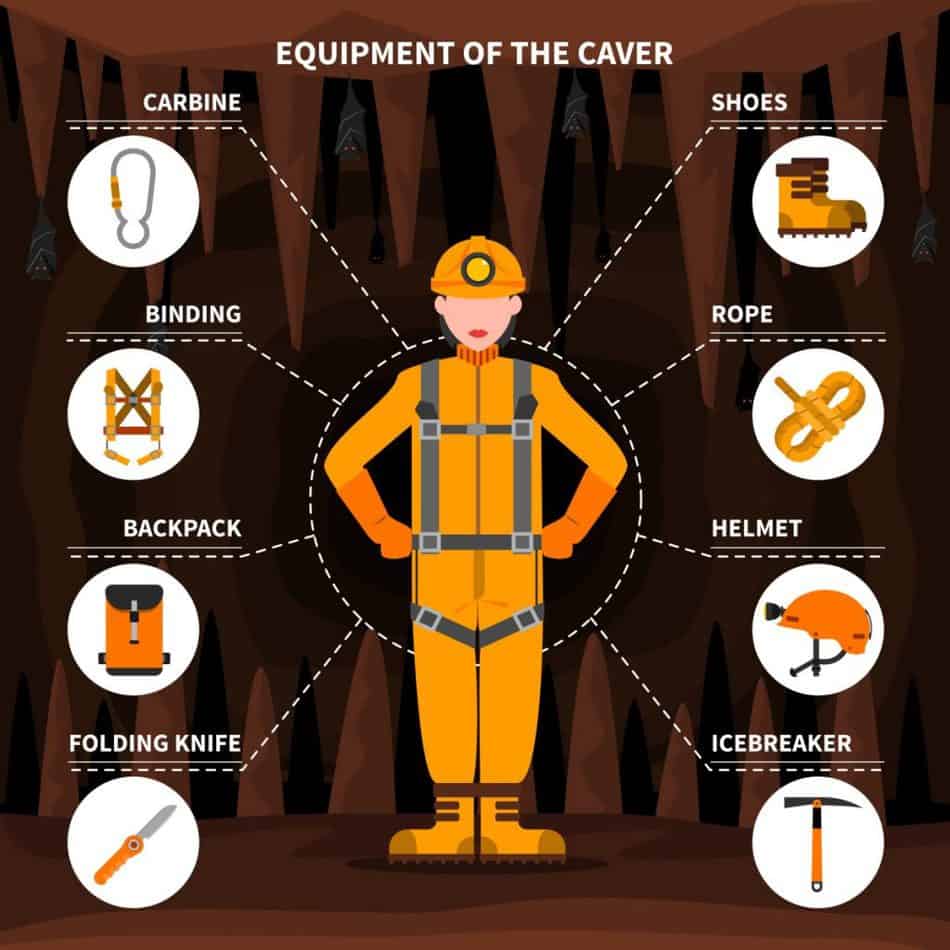
When you’re ready to get started caving, be sure to read my Beginners Guide and check out my recommended gear section.

